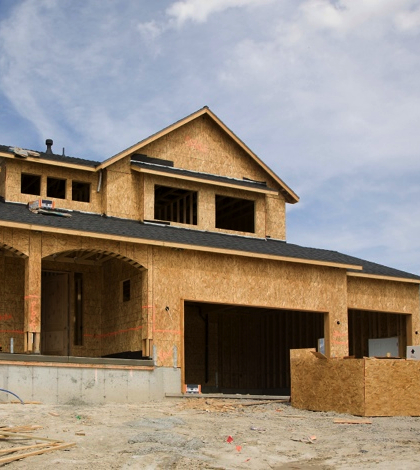Not enough houses are being built to keep up with demand, and the problem is particularly acute in the Inland Empire.
California’s homebuilding industry has made a slow but steady improvement since it all but crashed and burned eight years ago during the height of the recession.
In 2009, 36,421 single and multi-family units were built in the state, according to the Construction Industry Research Board in Sacramento, a non-profit agency that provides data to residential and commercial developers.
Last year, 100,961 units were built statewide, up from 36,421 units in 2009. That was the first time since 2007, when 113,034 units were developed, that the number of new housing units in California topped 100,000.
Housing construction has gone up every year since 2010, according to the research board.
All of that is the good news. The bad news is, it’s not nearly enough.
The research board, which has been tracking the California housing market since 1954, estimates that the state needs at least 200,000 new units every year to keep up with demand. Should it fall short of that mark, housing prices will continue to rise and people – especially first-time buyers – will be priced off the market, perhaps permanently.
It’s a major problem, and one that the state has a “moral obligation” to solve as quickly as it can, said Carlos Rodriguez, executive director of the Baldy View Chapter of the Building Industry Association of Southern California.
“We need more housing,” Rodriguez said during the chapter’s recent annual housing conference, which featured panel discussions on state and federal housing policies and a keynote address by Ben Metcalf, director of California’s Department of Housing and Community Development.
“We need more low-income housing, especially for our seniors,” said Rodriguez, whose chapter covers all of San Bernardino County. “We need more apartments for our college students, and of course we need to build more single-family homes.”
Rodriguez noted that home ownership in California is at its lowest point since the 1940s.
The problem is as serious in the Inland Empire as it is anywhere in the state. If construction doesn’t pick up, by 2019 San Bernardino County will be about 65,000 units short of where it needs to be to meet demand, according to Rodriguez
That figure includes single-family homes, apartments, condominiums and low-income housing.
Like Rodriguez, most the people at the housing conference would blame the slowdown in housing construction on several factors, most of which fall into the category of government interference: excessive fees, strict codes that are too difficult to comply with and, perhaps worst of all from the homebuilding industry’s perspective, the California Environmental Quality Act.
Adopted in 1970, CEQA is meant to set up statewide environmental regulations, much as the National Environmental Policy Act, also passed in 1970, established guidelines for maintaining environmental standards throughout the United States.
Its critics, however, maintain CEQA – besides creating heavy-handed and sometimes costly regulations – has been used to file frivolous lawsuits that have blocked development projects in the public and private sectors.
Undoubtedly high fees, too much regulation and bogus lawsuits have something to do with not enough houses being built in California, but by themselves those factors don’t tell the whole story, said Robert Kleinhenz, executive director of research at the UC Riverside Center for Economic Forecasting and Development.
“Remember that a lot of homebuilders got stung badly during the recession, and a lot of them are still reluctant to get back into the market,” said Kleinhenz, who is also an economist with Beacon Economics in Los Angeles. “They don’t want to get stung again.”
The job market, even though it’s improving, continues to hold the job market back, according to Kleinhenz.
There are still too many people who are uncertain about how long they will be drawing a steady paycheck, and that makes them reluctant to buy a house.
“You have jobs that people don’t have the skills to fill, or there are jobs that are open but they don’t pay enough to live on,” Kleinhenz said. “I think everyone agrees that [developer] fees in California are too high, but I don’ think you can blame everything on that. Fees are high everywhere.”
Homebuilders, in the Inland Empire and throughout California, face a number of obstacles when they want to build, said Jordan Levine, senior economist with the California Association of Realtors in Los Angeles.
CEQA and the high cost of building a project have had much to do with the drop in housing construction, as have tougher loan requirements put in place by the Federal Housing Administration. But established homeowners who don’t want anything built near them have also had an impact, Levine said.
“There’s a lot NIMBY in Calfornia,” Levine said, using the acronym for Not In My Backyard, a concept familiar to anyone who builds houses. “I think that has hurt the market a lot, although houses in the Inland Empire are still relatively affordable.
“But we are over regulated. We should be building enough houses to keep pace with our population growth, and we aren’t doing that.”
 IE Business Daily Business news for the Inland Empire.
IE Business Daily Business news for the Inland Empire.


